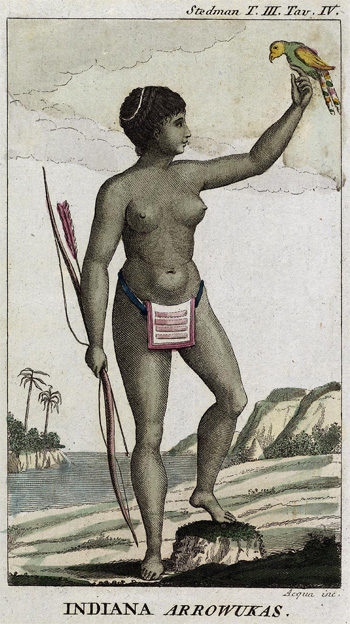
John Stedman, "Arowak Woman," 1818
|
Gender, visual images, and the Atlantic world of print
This project explores the role of print and printed images in transmitting changing views of gender and sexuality in the eighteenth-century Atlantic world. My source base is the profusion of travel writing in this era—first, the unpublished travel diaries, letters, and sketchbooks maintained by numerous women and men who wrote about the people they encountered, even on the most mundane or short journeys; and second, the hundreds of published English, French, and Dutch illustrated travel volumes that depicted “exotic” peoples in far-flung cultures. I believe understanding the potent combination of textual and visual imagery can elucidate how Americans and Europeans learned to see gender—even in their own societies—by visualizing peoples of other races and cultures.
The project was inspired when I recognized that a remarkably small percentage of recent books and articles analyze gender or sexuality as important elements of the Atlantic movement of peoples, goods, and ideas during this period. Whereas Atlantic histories discuss such subjects as race, religious movements, and mercantilism as influential factors shared across the varied geographic settings of Europe, Africa, and the Americas, they generally treat gender and sexuality as highly localized experiences unique to specific regions. My research seeks to correct that pattern and to demonstrate that gender was an integral aspect of the movement and exchange taking place across cultures. |



